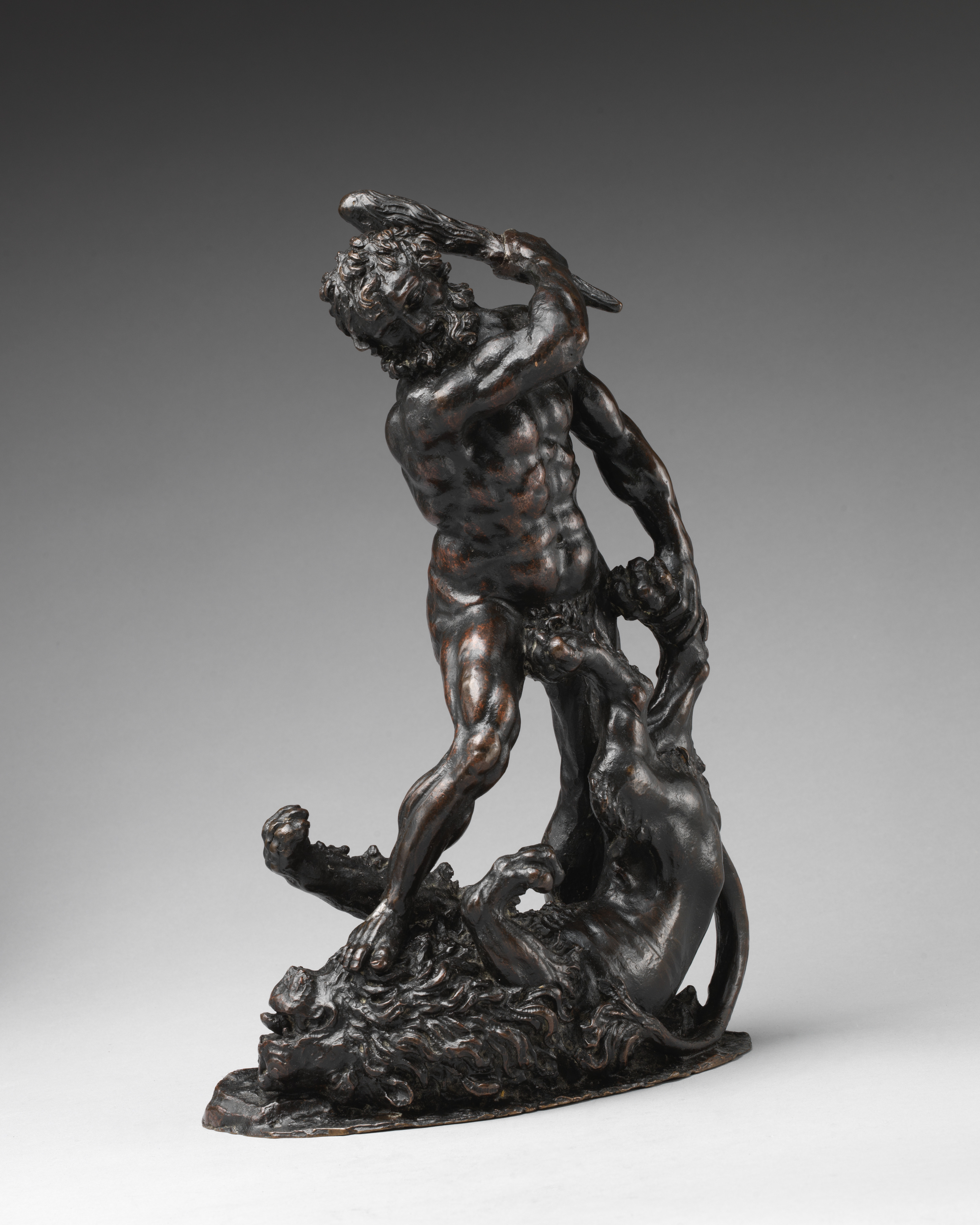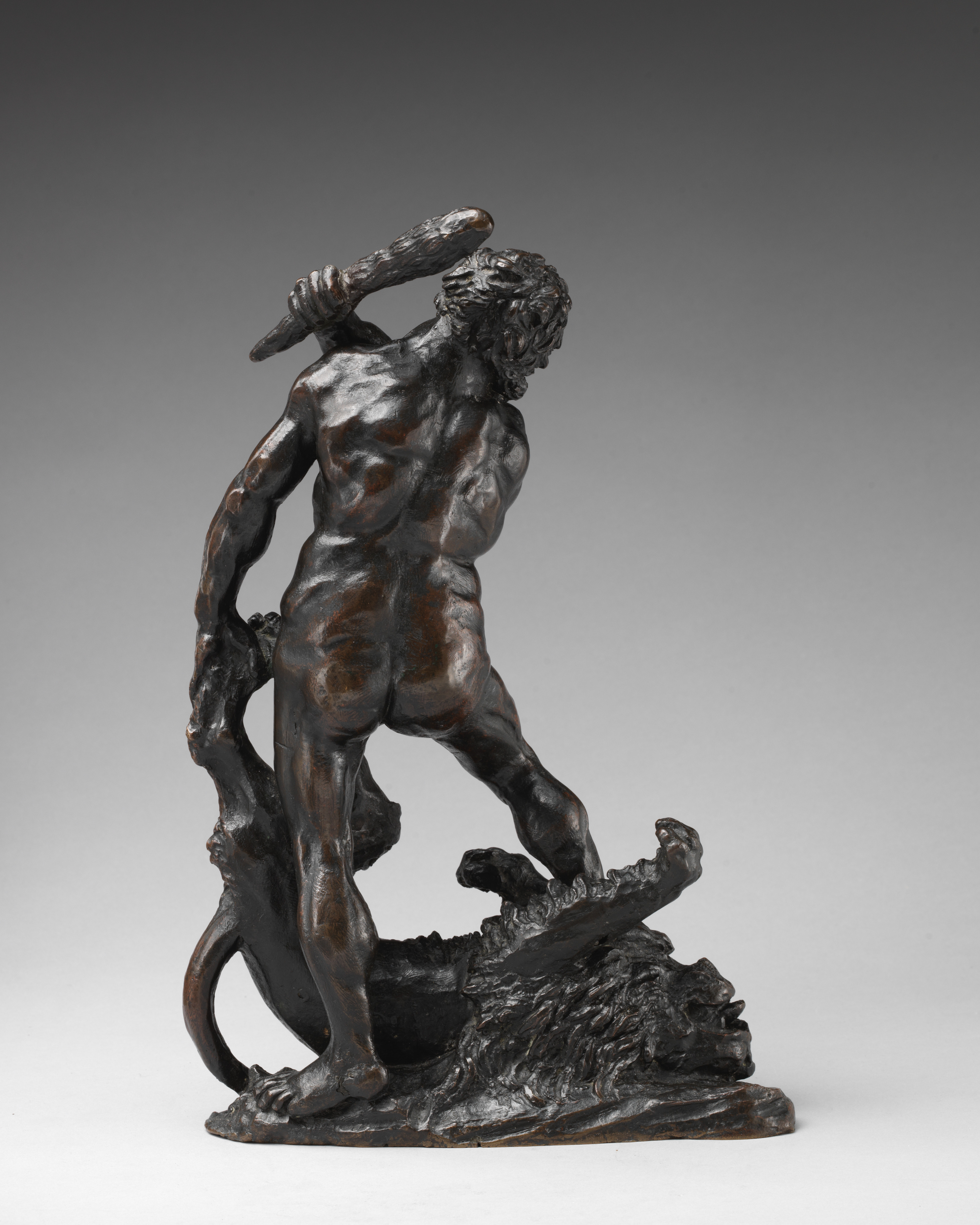Hercules and the Nemean Lion
The composition recurs in a bronze in the Badisches Landesmuseum, Karlsruhe, and in another bronze on the art market in London (sale, Sotheby’s, New York, May 29, 1981, no. 162). Wilhelm von Bode discussed the present statuette as an early-sixteenth century Venetian work from the circle of Camelio. However, the violent sideward torsion and the decorous penetrations of space along the right flank are fully Baroque. Convincing comparisons with Italian sculpture are wanting. The richly faceted surface suggests an original model in limewood. The anatomy is expressive but scientifically inexact, as can be appreciated especially in Hercules; muscular back, where the forms are knotted together around a high, pinched-in waist. These qualities recall German Baroque carving—large-scale sculptures by Bendl, Brokoff, and Braun families of Bohemia come to mind—but next to nothing is known about German bronze statuettes of the late seventeenth century.
[James D. Draper, 1984]
Due to rights restrictions, this image cannot be enlarged, viewed at full screen, or downloaded.
This artwork is meant to be viewed from right to left. Scroll left to view more.




